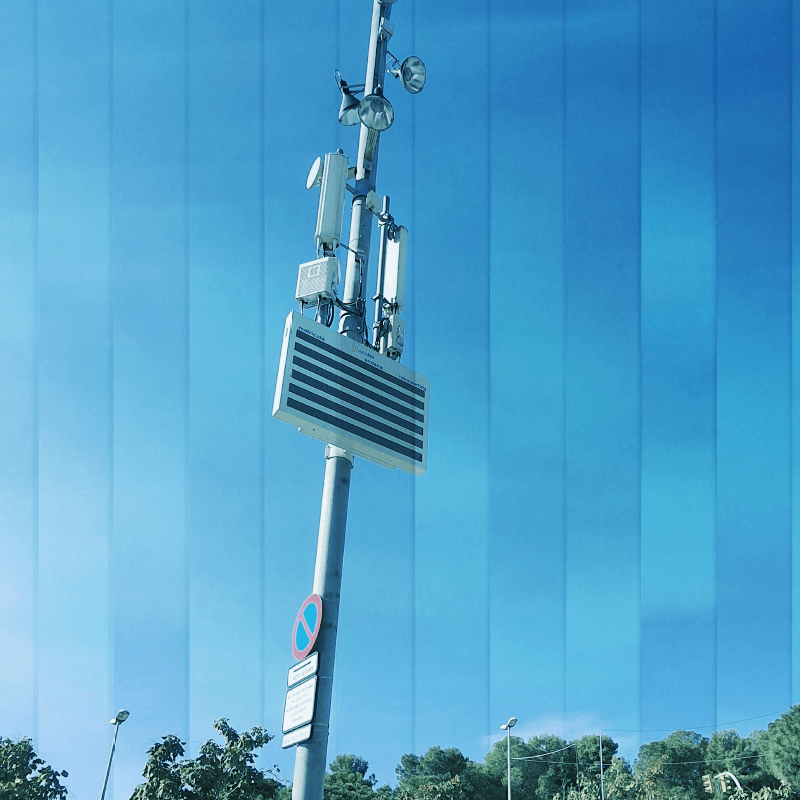Indoor solutions
Our suite of indoor solutions give you the infrastructure you need to reach the indoor spaces that even the best-placed rooftop tower sites cannot.
Each can be tailored to suit a number of indoor environments that you might typically want to reach: from shopping centres to stadiums, office buildings to bank branches. While the setup and components may vary depending on your goals and where you need to deploy them, every solution ensures lightning-fast, low-latency connectivity to our macro layer, wherever and whenever it is needed.
Distributed Antenna Systems (DAS)
Our DAS solutions are comprised of small networks of antennas, strategically deployed throughout a building. These are then connected to either a base station (for 2G connectivity) or nodes (for 3/4/5G connectivity).
Working in tandem with our powerful network of macro sites, they enable you to overcome the key challenges that operators, building owners and local authorities have typically faced when trying to extend their network:
- Bringing consistent coverage to underground locations such as subway stations and tunnels.
- Increasing capacity in crowded buildings such as airports and sports stadiums.
Active DAS use fibre optic or Ethernet cable to distribute the signal from the master unit, which converts the analogue radio signal to digital, and then to the antenna/nodes around the building. This results in fast, high-quality, reliable coverage and capacity beyond the reach of the macro layer, to a range of indoor locations.
These systems are best suited to the needs of the busiest and biggest indoor environments - whether you’re a network operator wanting to ensure your customers can stay connected as they move through a busy international airport, or the owner of a sports stadium that hosts tens of thousands of fans at a time.
Passive DAS is a more cost-effective solution than an active system for many indoor spaces – they’re best suited to environments such as supermarkets and cinemas. These don’t typically experience extreme spikes in voice and data usage but still require consistent coverage and capacity. Our passive DAS use coaxial cable rather than fibre optic cable, without an active element that requires amplification.
As the name suggests, hybrid DAS utilise both radio transmission and either Ethernet or fibre to carry the signal from the signal source. These can be adapted to to overcome varied connectivity challenges and criteria within the same building. For example, where particularly busy areas require the added strength of active components.
Indoor small cells
The main benefits of small cells over our main DAS solutions are that they are less design-intensive, have lower upfront costs and can be deployed much faster. This typically makes them better suited to solving coverage and capacity issues in smaller buildings, such as offices and supermarkets.

Indoor small cells fulfil a similar role to DAS solutions, but whereas all antennas in a DAS share one backhaul connection, individual small cells each maintain their own individual connection.
The key characteristics of small cells
Small cells may be discrete in size but the boost they can bring to your coverage and capacity is anything but. Individually powered and individually connected to the network, they provide a particularly flexible, effective solution.
Repeater-based indoor solutions

For banks, pharmacies and other small indoor environments where larger DAS systems and small cell solutions are not required, scaled-back solutions that use repeaters in place of base stations or nodes can be deployed to expand and improve connectivity.
Better connectivity
can be delivered through expertly tailored and efficient repeater-based indoor systems, which brings with it…
Better business
in the form of the expanded services on offer, that are data-driven, easy-to-optimise and provide…
Better experiences
for those who are looking for faster, more personalised and more rewarding outcomes.
How it works
Our repeater-based indoor solutions work by installing a discrete outdoor repeater outside of the building in which you wish to extend your network. A small number of antennas (typically one or two) are then strategically deployed within the building to receive and distribute the signal. This ensures that both potential deadspots and hotspots enjoy the same high-quality, low-latency and lightning fast connectivity as if receiving direct from the macro layer itself.
Outdoor solutions

People in Europe’s cities increasingly expect operators to deliver high-quality, low-latency connectivity, as they travel through congested cities and complex transport networks. This often necessitates boosts to the macro layer in outdoor areas as well as indoor ones.
Outdoor small cells
Small cells are a key solution for solving outdoor urban connectivity issues, and they’re a growing (if discreet) presence on Europe’s city streets. If you’ve ever persevered with stuttering mobile video streams on a slow-moving, rush hour commute, only to see an improvement seemingly overnight – there’s a good chance a discreet small cell has been installed on a lamppost or similar structure somewhere near you.
Working in the same way as their indoor counterparts, they are often deployed either on monopoles or existing street level installations, such as lampposts. Each individual small cell boosts coverage and/or capacity in areas that it is not feasible to reach by densifying the macro layer.
Without small cell deployment
- 1 Lagging/low-quality video and audio streaming
- 2 Slow internet browser load times
- 3 Poor call quality and dropped calls
With small cell deployment
- 1 Smooth, high-quality video and audio streaming
- 2 Fast internet browsing
- 3 Clear, reliable call connectivity
Implementing and operating your outdoor small cells
Our in-house forecasting and implementation services help to ensure seamless small cell success, by proactively identifying where and how best to deploy them.
Helping to power Europe’s digital transformation
Many of Europe’s cities are comprised of mixed-use districts in which countless people are living, working and travelling to and from the same urban spaces. Not only that, they’re often doing so at the same time of day, along the same commuter routes. This presents significant challenges for MNOs, faced with a demographic who increasingly want to share media, stream video and join crystal-clear conference calls wherever they are.
Furthermore, as augmented/virtual reality, autonomous cars and an influx of IoT developments also become increasingly commonplace, MNOs and other types of customers, such as technology companies and utilities providers, will also require unprecedented levels of connectivity.
Related assets and services


